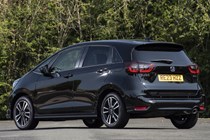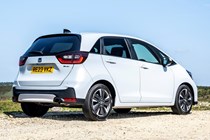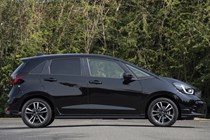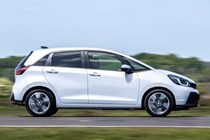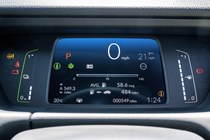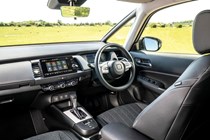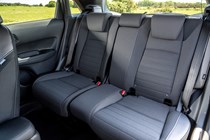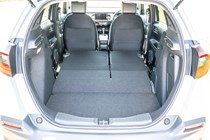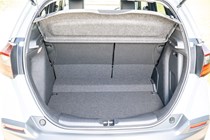
Honda Jazz interior, tech and comfort
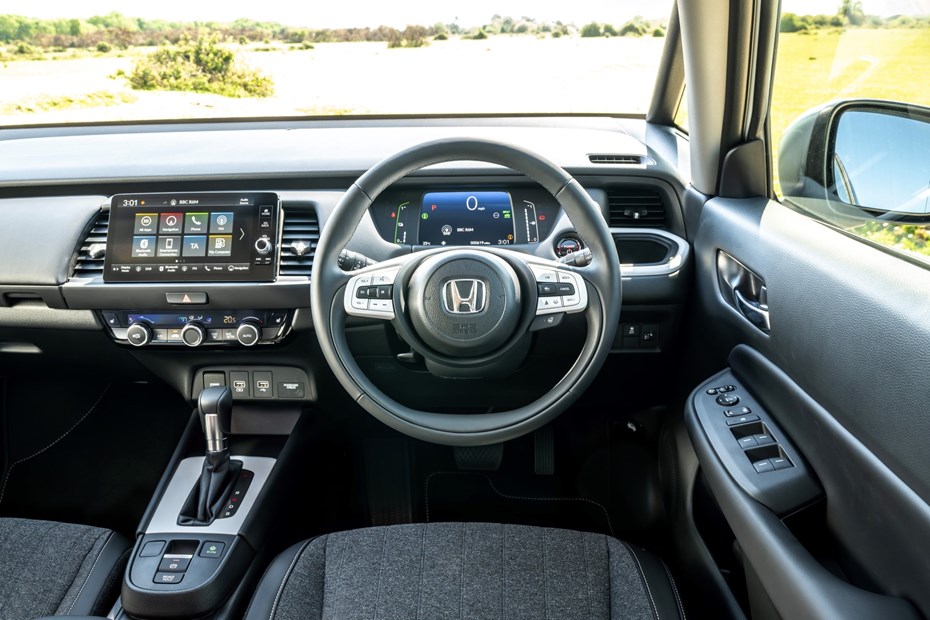
- Improved and connected infotainment system
- Impressive forward visibility
- Sleek-looking dashboard is easy to navigate
How is the quality and layout?
It’s inside where the fourth-generation Jazz bears the most marked differences to its predecessor and all the better for it.
Taking on some design cues from the Honda e and generally tidying up some annoying ergonomic problems the last car suffered, the latest cabin looks appealing, if a little drab in certain colour schemes. Sadly, quite a few of the plastics, including the steering wheel, feel cheap and unpleasant to touch, but the build quality itself is first-rate. Even so, the Peugeot 208 feels even plusher insider.
One of the first things you notice sitting in the Jazz is the superb view out the front – visibility was always a strong point in this car and it’s stepped up a notch thanks to a low-level dashboard and windscreen pillar arrangement.
The dash is flat across the width of the car, with only a small cowl for the 7.0-inch digital instrument screen to shade it from the sun, so there’s nothing interrupting your view.
However, the main contributor to the enhanced view out is the shape of the windscreen pillars and the larger windows between them and the front doors. The pillars are half as thick as before and set wider apart, boosting the field of view from 69 to 90 degrees, making it easier to spot other vehicles approaching that would otherwise be obscured by the car’s bodywork. Even the wiper blades are hidden below the window line. It all makes a remarkable and reassuring difference.
The same goes for the softer touch materials used on a number of areas of the dashboard itself, and the metallic-look finishes on the climate control switchgear, which offsets some of the cheapness experienced elsewhere. All of the buttons and dials also respond with a positive click when you use them – this won’t suit all, but it does make the cabin a bit more intuitive to use on the move, because each action comes with an audible confirmation.
Infotainment and tech
We think the most welcome change however is within the 9.0-inch infotainment screen, which is now laid out like a smartphone or tablet with an info bar across the top, shortcuts along the bottom and tiles for different apps and functions in the middle.
There are also physical controls for the home and back buttons, plus audio (including an actual volume knob), which makes finding your way around its various menus much easier. Honda says it now takes half the time to carry out common operations like setting up the sat-nav or pairing a phone compared to the outgoing Jazz, and there’s even a finger rest to make operating the screen easier on the move.
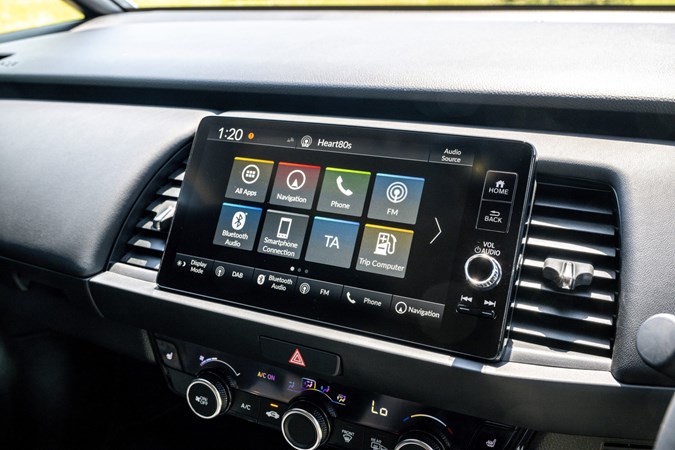
Even more convenient is the Honda Personal Assistant, again, first seen in the Honda e. Like most modern voice control systems this can understand conversational and contextual speech. We found you didn’t need to ask it to programme the sat-nav or find a parking space in a particularly robotic way – it learns how you speak, rather than you learning what it listens for.
Connectivity has also been given a huge boost with the inclusion of Android Auto and wireless Apple CarPlay, plus an optional WiFi hotspot to keep passengers entertained on the move.
Finally, you can also pair your car to your phone with the My Honda+ app. Use it to find its location, lock and unlock it, and even programme destinations into the navigation system.
Comfort
- Reduced cabin noise
- Improved seat comfort
- Softly sprung suspension
Unsurprisingly the Jazz is at its most comfortable in town when wafting around quietly in EV mode – but measures have been taken to improve things at all speeds.
More sound insulation has been installed in the cabin and floor, plus around the doors, with the aim of reducing the wind and engine noise on the move. Those stubby door mirrors and redesigned windscreen pillars also contribute to a more hushed environment.
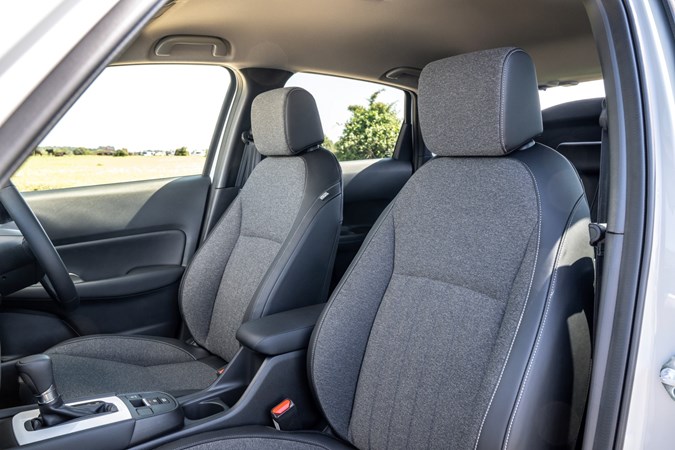
The seats have also been changed from an ‘s-spring’ design to a more supportive frame, meaning they hold you upright more solidly, but this also allows for thicker cushions to be used for more comfort. We found the seats to be especially good, feeling squashy yet solid from the moment you sit down.
Harder acceleration, such as when overtaking causes the engine revs to rise noisily, but this soon subsides leaving you with one of the calmer long distance superminis along with the Skoda Fabia. Overall, the gentler you are with the Honda, the more comfortable it is.



